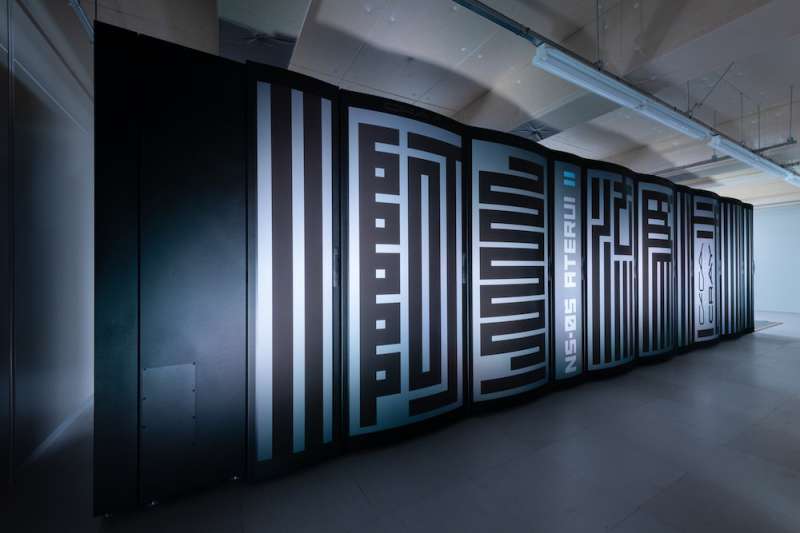Supercomputer Astronomy: The Next Generation

The supercomputer Cray XC50, nicknamed NS-05 "ATERUI II" started operation on June 1, 2018. With a theoretical peak performance of 3.087 petaflops, ATERUI II is the world's fastest supercomputer for astrophysical simulations. ATERUI Ⅱsimulates a wide range of astronomical phenomena inaccessible to observational astronomy, allowing us to boldly go where no one has gone before, from the birth of the universe itself to the interior of a dying star.
Professor Eiichiro Kokubo, the CfCA Project Director says, "Computational astronomy is gaining popularity in many fields. A new 'telescope' for theoretical astronomy has opened its eyes. I expect that ATERUI II will explore the Universe through more realistic simulations."
ATERUI II is a massive parallel supercomputer and the 5th generation of systems operated by the National Astronomical Observatory of Japan (NAOJ). Linking forty thousand cores allows ATERUI II to calculate rapidly. ATERUI II has three times better performance than the previous "ATERUI" system. A high-speed network enables astronomers to access ATERUI II from their home institutes. In this year, about 150 researchers will use ATERUI II.
With its superior computational capability, ATERUI II will tackle problems too difficult for previous computers. For example, ATERUI II is able to calculate the mutual gravitational forces among the 200 billion stars in the Milky Way Galaxy, rather than bunching them into groups of stars the way other simulations do. In this way ATERUI II will generate a full-scale high-resolution model of the Milky Way Galaxy.

Computational astronomy is still a young discipline compared to observational astronomy, in which researchers use telescopes to observe celestial objects and phenomena, and theoretical astronomy, where researchers describe the Universe in terms of mathematics and physical laws. Thanks to the rapid advancement of computational technology in recent decades, astronomical simulations to recreate celestial objects, phenomena, or even the whole Universe within the computer, have risen up as the third pillar in astronomy.
Aterui is the name of a historical hero who lived in the Mizusawa area, where ATERUI II is located. With his comrades he fought bravely against conquerors 1200 years ago. ATERUI II is nicknamed after this brave hero in hopes that it will boldly confront the formidable enigmas of the Universe. The reimagined tensyo kanji (traditional block style lettering) for "ATERUI II" (阿弖流為 弐) designed by artist Jun Kosaka are written on the housing.
Provided by Center for Computational Astrophysics





















